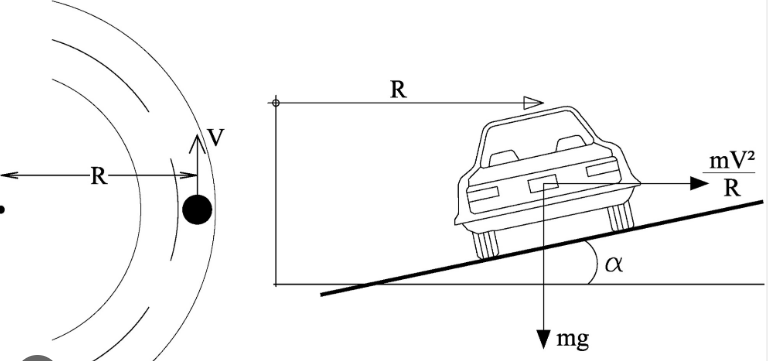Superelevation design is part of the design of the horizontal alignment of a highway. Superelevation is provided to counteract the effect of centrifugal force on the horizontal curves.
Why Superelevation is needed?
When a vehicle is negotiating on a horizontal curve on a highway, it experiences the centrifugal force acting on it in the direction outwards the curve it tracing.
To counteract this centrifugal force, a vehicle has two options
– to get assist with the lateral friction between the road and the vehicle
As per Indian Standards, the value of coefficient of friction to prevent lateral skidding is limited to 0.15 for design purposes
– Vehicle counteracts by creating an overturning moment
This is when superelevation comes into the picture. When we provide superelevation we can help vehicles counteract the centrifugal force. Superelevation is simply the transverse inclination in the pavement also called ‘cant’ or ‘banking’
Attainment of Superelevation
- By elimination of the crown of the cambered section
- Rotation of pavement to attain full superelevation
Superelevation is introduced by a rise in the outer edge of the pavement at a rate of not exceeding 1 in 150 in plain and rolling terrain and 1 in 60 in mountainous terrain.
IRC Recommendations for Camber
| Type of Pavement | Light Rainfall Intensity | Heavy Rainfall Intensity |
| C.C pavements and thick bituminous pavements | 1 in 60 | 1 in 50 |
| Thin Bituminous Pavements | 1 in 50 | 1 in 40 |
| W.B.M and Gravel Pavements | 1 in 40 | 1 in 33 |
| Earthen Pavements | 1 in 33 | 1 in25 |
Limits for Maximum Superelevation
According to IRC the Maximum Superelevation in Areas Which Are Bound by Snow fall – 7% Which are not bounded by Snowfall – 10%
Important Links For Transportation Engineers-
AASHTO – Official site
Indian Road Congress – Official Site
Other Relevant Posts-
IRC 112 2011 [PDF Download]
What is Camber of the Road? Types and Benefits
